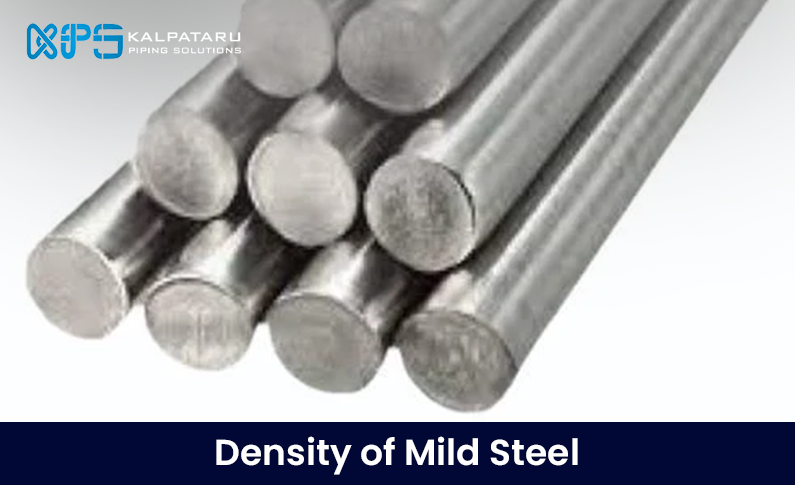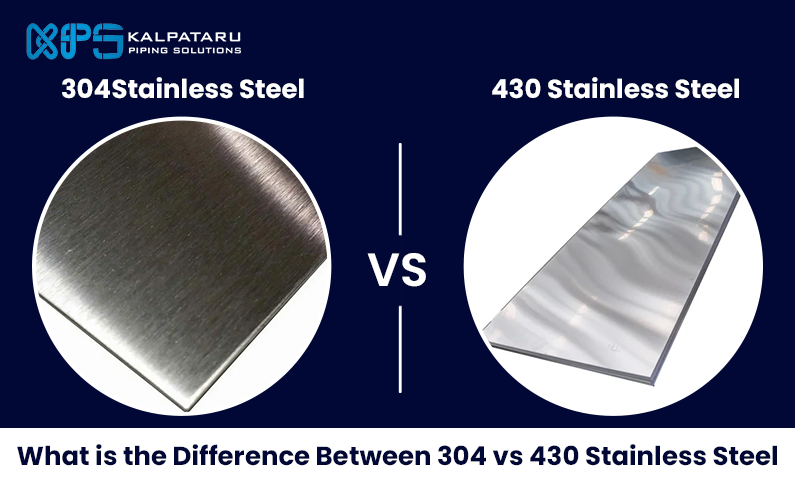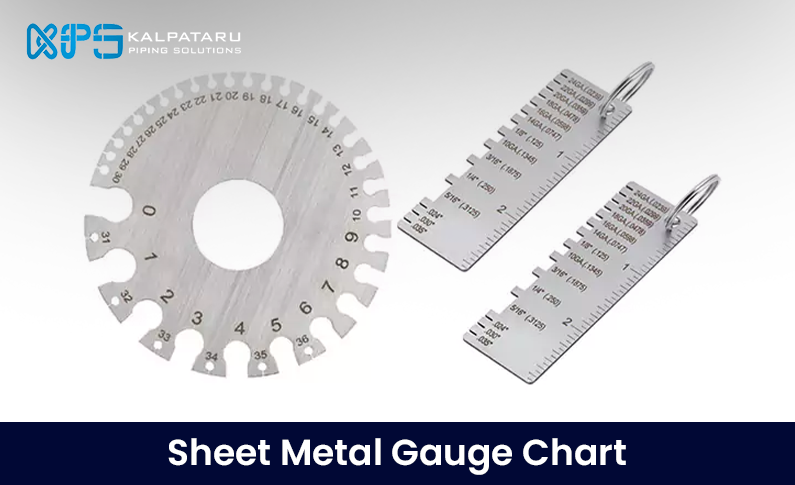Mild steel, also known as low-carbon steel, is one of the most commonly used types of steel. It is prevalent in construction, automotive applications, and for making fences, signs, and various other products. Mild steel is valued for its good weldability, machinability, and ductility.
Mild steel is defined by its low carbon content, which is typically less than 0.2% by weight. This low carbon content gives mild steel its characteristic properties. In the AISI (American Iron and Steel Institute) classification system, mild steel grades start with “10” and are followed by two digits that are less than 20, which roughly indicate the carbon content in hundredths.
This guide will delve into the chemical composition, mechanical properties, various grades, and overall characteristics of mild steel, highlighting why it is such a versatile and widely used material.
What is Mild Steel?
Mild steel is a type of steel with a low carbon content, making it one of the most widely used forms of steel. It primarily consists of iron (Fe) and a small amount of carbon, typically less than 0.2%. This low carbon content gives mild steel its characteristic properties, such as good machinability, weldability, and strength at a relatively low cost.
Different grades of mild steel are distinguished by their carbon content. As the carbon level increases, the steel becomes stronger but less ductile. In addition to carbon, mild steel may also contain other alloying elements like manganese (Mn), which can enhance its properties, including tensile strength and wear resistance.
Mild steel is used in various general-purpose applications due to its balance of strength and affordability. Its versatility makes it suitable for a wide range of uses, from construction and automotive parts to fencing and signage.
What is the Composition of Mild Steel?
Mild steel, commonly used in construction and engineering, is primarily composed of iron (Fe) with a low carbon content, usually below 0.2%. This low-carbon content is what sets mild steel apart from other types of steel, making it more workable and cost-effective.
In addition to carbon, Density of Mild Steel often includes manganese (Mn). Manganese enhances the steel’s strength and improves its weldability, making it suitable for various applications.
Different grades of mild steel have varying amounts of carbon, which affects their properties. Higher low carbon content increases strength but can reduce ductility. Overall, mild steel’s composition, with its base of iron and added elements like manganese, makes it a versatile material for many uses.
Density of Mild Steel in kg/m3, g/cm3, lb/in3
Mild steel has a density of 7.85 g/cm³, 7860 kg/m³, or 0.284 lb/in³. This density is largely due to its composition, with iron making up over 98% of the material. The remaining fraction consists of small amounts of alloying elements like carbon, manganese, and silicon. Since iron itself has a density close to 7.87 g/cm³, it largely determines the density of mild steel. Variations in density may occur depending on the specific alloying elements used in different grades of mild steel.
What Are the Different Grades of Mild Steel
Mild steel is available in various grades, each identified by the AISI (American Iron and Steel Institute) numbering system. All grades start with “10,” indicating their low carbon content. The last two digits, which are less than 20, represent the approximate carbon content multiplied by 100. For example, 1018 steel has about 0.18% carbon, while 1020 steel contains roughly 0.20% carbon. Most mild steel grades also have low levels of phosphorus and sulfur (less than 1%) since these elements are considered impurities that can affect the steel’s performance.| Classification | Approximate Equivalents | Key Points |
|
AISI 1008 |
DIN 1.0204 |
Excellent cold formability |
|
AISI 1010 |
DIN 1.0301 |
Low strength, used for magnet cores |
|
AISI 1015 |
DIN 1.0401 |
Wear-resistant, good machinability |
|
AISI 1018 |
DIN 1.0419 |
Excellent for carburizing applications, good machinability |
|
AISI 1020 |
DIN 1.0044 |
A good balance of strength and ductility, |
Mild Steel of Mechanical Properties
| Type of Mild Steel | Modulus of Elasticity (GPa) | Brinell Hardness | Ultimate Tensile Strength (MPa) | Yield Strength (MPa) | Elongation at Break (%) | Steel Density kg/m3 |
|
AISI 1008 |
200 |
95 |
340 |
285 |
20 |
7.87 |
|
AISI 1010 |
205 |
105 |
365 |
305 |
20 |
7.87 |
|
AISI 1015 |
205 |
111 |
385 |
325 |
18 |
7.87 |
|
AISI 1018 |
205 |
126 |
440 |
370 |
15 |
7.87 |
|
AISI 1020 |
186 |
121 |
420 |
350 |
15 |
7.87 |
|
S275 J0 |
205 |
121 |
430 – 580 |
275 |
21 |
7.85 |
|
S355 J0 |
210 |
146 |
510 – 680 |
355 |
20 |
7.80 |
Chemical Composition of Mild Steel
| Classification | Carbon Content (% Weight) | Secondary Alloying Elements (% Weight) |
|
AISI 1008 |
<0.1 |
0.3 to 0.5 Mn; 0.04 P; 0.05 S |
|
AISI 1010 |
0.08 to 0.13 |
0.3 to 0.6 Mn; 0.04 P; 0.05 S |
|
AISI 1015 |
0.13 to 0.18 |
0.3 to 0.6 Mn; 0.04 P; 0.05 S |
|
AISI 1018 |
0.14 to 0.2 |
0.6 to 0.9 Mn; 0.04 P; 0.05 S |
|
AISI 1020 |
0.17 to 0.23 |
0.3 to 0.6 Mn; 0.04 P; 0.05 S |
|
S275 |
0.18 |
1.5 Mn; 0.030 P; 0.030 S; 0.012 N; 0.55 Cu |
|
S355 |
0.2 |
1.6 Mn; 0.030 P; 0.030 S; 0.012 N; 0.55 Cu |
Industrial Applications of Mild Steel
Mild steel is a versatile material used across various industries. Its common applications include manufacturing car bodies, furniture, and wire. It’s also widely used for rebar in construction and for making fasteners. For more demanding applications, such as structural components and storage tank plating, higher strength grades of mild steel are employed. Its affordability and ease of use make it a popular choice for many industrial needs.
Toughness of Mild Steel
Mild steel is renowned for its toughness, which reflects its ability to absorb energy without fracturing. This toughness varies with the steel grade and is assessed by the stress-strain curve’s area until fracture. One common measure of toughness is the Charpy impact strength, which for 1020 mild steel is 24 J at 10 °C, indicating good impact resistance.
Strongest Mild Steel Grade
Among the various grades of mild steel, the 1020 grade is noted for its strength. This strength is due to its higher carbon content, which enhances its durability but reduces ductility.
Melting Point of Mild Steel
Mild steel melts at temperatures ranging from 1450 to 1530 °C. This melting point varies depending on the specific carbon and alloy content of the steel.
Weldability of Mild Steel
Mild steel is highly suitable for welding. Its weldability is improved with grades that contain higher levels of silicon and manganese. This makes mild steel ideal for welding using basic methods like Shielded Metal Arc Welding (SMAW), with commonly used rods such as ER70S-3 and ER70S-6.
Summary
This blog delved into the density of mild steel, examining its definition, key properties, and various grades. For further details or inquiries about mild steel density in kg/m³, please contact a representative at Kalpataru Piping Solutions.
FAQs
What is the density of mild steel in kg m3?
The density of mild steel is 7,860 kg/m³. This indicates the mass of the steel per unit volume.
What is a mild steel?
Mild steel, also known as low carbon steel, is a type of carbon steel that contains a relatively low carbon content, typically between 0.05% and 0.25% by weight. This makes it more malleable and easier to work with compared to high carbon steel, which can contain up to 2.5% carbon.
What is the density of mild steel 7850?
The density of mild steel is approximately 7,850 kg/m³ or 7.85 g/cm³. This means that a cubic meter of mild steel weighs 7,850 kilograms. Mild steel has a slightly lower density compared to pure iron (7.87 g/cm³) and is denser than aluminum (2.70 g/cm³), but less dense than copper (8.96 g/cm³).




